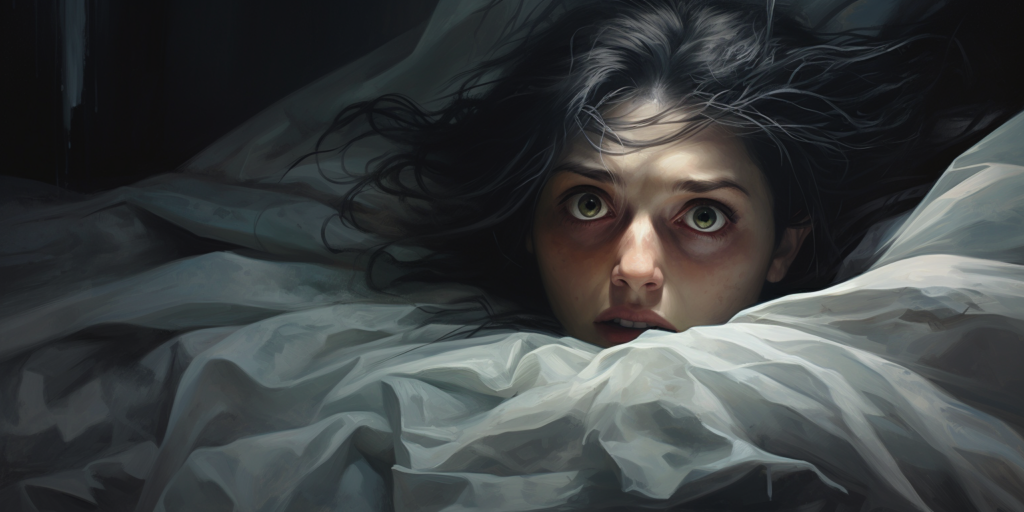Fear has many faces, and it’s a universal experience that we can all relate to in some way. It can be straightforward or complex, rational or irrational, mild or intense. One of the more unique fears is xanthophobia, an irrational fear of the color yellow.
Imagine being afraid of sunflowers, school buses, or even just a simple banana because they’re yellow. That’s what living with xanthophobia is like. It’s not just a dislike for the color yellow; it’s an intense fear that can trigger anxiety and panic attacks.
As uncommon as it may sound to some of us, xanthophobia is very real for those who suffer from it. Understanding this phobia involves delving into its potential causes and symptoms while also exploring how individuals cope with this relatively unknown condition.
Understanding Xanthophobia: An Overview
Here I am, delving into the depths of a lesser-known phobia that’s both peculiar and intriguing—xanthophobia. You’re probably wondering what it is. Well, xanthophobia is an intense, irrational fear of the color yellow. Yes, you read it right! Something as commonplace and cheerful as the color yellow can indeed induce profound anxiety in some individuals.
Let’s dig a bit deeper into this unusual phobia. The term ‘xanthophobia’ comes from Greek roots: ‘xanthous,’ meaning yellow and ‘phobos,’ denoting fear. Like any other phobia, it varies in severity among those affected by it; while one person might feel uneasy around yellow objects or light, another could experience crippling panic even at the thought of the color.
You may ask how does xanthophobia manifest? It’s characterized by an array of symptoms including rapid heartbeat, shortness of breath, trembling, sweating, nausea—even feelings of dread or terror when confronted with anything yellow. This could be anything from a splash of mustard to dazzling sunlight or golden daffodils.
What leads to xanthophobia? It’s tough to pinpoint exact causes as they differ from person to person. Some theorists suggest traumatic events linked with the color yellow in childhood could trigger this fear later in life. Others propose that cultural or symbolic associations with yellow—like caution signs or illness—could contribute to its development.
Finally let me say there’s hope for those grappling with xanthophobia! Treatment options exist just like for any other specific phobia—and they often involve therapeutic techniques such as cognitive-behavioral therapy (CBT), exposure therapy or medications aimed at reducing anxiety levels.
Remember folks: if you suspect you have xanthophobia—or know someone who might—it’s important not to self-diagnose but seek professional help instead.
Causes and Triggers of Xanthophobia
Delving into the causes and triggers of xanthophobia, it’s essential to understand that this fear, like many other phobias, doesn’t have a one-size-fits-all origin. Every person is unique, and so are their experiences with this color-induced anxiety.
One common cause could be a traumatic event associated with the color yellow. Maybe it was an accident involving a yellow car or a painful bee sting in childhood. These incidents can leave deep psychological imprints leading to xanthophobia.
In some cases, cultural beliefs may also play a role. For example, in certain societies, the color yellow represents caution or danger which might instill fear.
Genetics can’t be ruled out too! A predisposition towards anxiety disorders may increase one’s likelihood of developing specific phobias such as xanthophobia.
Let’s touch on some triggers now. The sight of anything overwhelmingly yellow can trigger an episode in individuals suffering from xanthophobia. This could range from seeing someone wearing bright yellow clothes to walking into a room painted primarily in this hue. Even less overt things like receiving a text written in yellow font could set off panic symptoms.
It’s important to remember that while these triggers may seem trivial to others, they are incredibly distressing for those living with xanthophobia.
Finally, let me stress that no two people experience phobias exactly alike – what triggers fear for one person might not impact another at all. So understanding oneself is crucial when dealing with any type of phobia including our topic today – Xanthophobia.
Symptoms and Diagnosis of Xanthophobia
The fear of the color yellow, or xanthophobia, is more than just a simple aversion. It’s an intense, irrational fear that can trigger a range of physical and emotional symptoms. Let’s delve into what these may look like.
Physical manifestations can vary from person to person but often include increased heart rate, sweating, trembling, or even nausea. Shortness of breath can also occur as a result of panic attacks induced by the phobia.
Emotionally speaking, individuals with xanthophobia may experience feelings of dread or terror when confronted with the color yellow. They might go out of their way to avoid any scenario involving this hue – from bypassing a yellow traffic light to refusing food items with yellow packaging.
Now let’s switch gears and talk about diagnosis. A trained mental health professional typically diagnoses xanthophobia using specific criteria outlined in the Diagnostic and Statistical Manual (DSM). This includes:
- Persistent fear that is excessive or unreasonable
- Immediate anxiety response upon exposure
- Recognition by the individual that their fear is excessive
These guidelines ensure that an accurate diagnosis takes place so appropriate treatment options can be explored. However, it’s essential to remember that only a licensed healthcare provider should make such determinations based on comprehensive evaluations.
In conclusion (without starting with “in conclusion”), understanding both symptoms and diagnostic procedures for xanthophobia helps us better comprehend this lesser-known phobia and empathize with those dealing with its challenges on a daily basis.
Impacts on Daily Life: The Struggles with Xanthophobia
Living with xanthophobia, an intense fear of the color yellow, can be a daily struggle. It’s not just about side-stepping sunflowers or grimacing at golden rays of sunshine. This disorder often intrudes into every aspect of a person’s life, from what they wear to where they go.
Imagine how it feels like when something as omnipresent as the color yellow becomes a source of dread. For those grappling with xanthophobia, this is their reality. A simple trip to the grocery store could transform into an anxiety-fueled ordeal. Yellow packaging on shelves, bananas in the fruit aisle – these everyday sights could trigger panic attacks.
The impact goes beyond personal discomfort and inconvenience though. There are societal implications too. In American culture for example, yellow often signifies positivity and energy – think smiley faces and sunbursts! So individuals battling xanthophobia may find themselves feeling out-of-sync or misunderstood by others around them.
Furthermore, practical aspects of living become complicated too:
- Driving can prove challenging since traffic lights and road signs frequently incorporate yellow.
- Choosing products or services becomes restrictive due to the ubiquitous presence of yellow in branding.
- Even digital interfaces aren’t safe havens because many apps and websites use splashes of yellow for design contrast.
In essence, having xanthophobia isn’t simply disliking a particular hue; it’s being constantly hounded by an irrational fear that looms large over routine activities and social interactions alike.
Note: This isn’t about demonizing the color yellow or those who have this phobia but shedding light on what life might be like navigating through this condition.
Psychological Perspective on Xanthophobia
Let’s dive right into the psychological perspective of xanthophobia. Fear, as an emotion, is not always a negative thing. It’s a survival instinct that alerts us to potential dangers and enables us to respond promptly. However, when this fear becomes irrational and intense about something harmless like the color yellow (xanthophobia), it’s no longer helpful but detrimental.
Now, you might wonder why someone would be afraid of such a common and harmless thing as the color yellow. The answer lies in how our brains process information. A traumatic event involving the color yellow can cause our brain to associate yellow with danger or discomfort. For instance, if someone were stung by a swarm of bees during childhood while playing in a field of bright-yellow sunflowers, they might develop xanthophobia.
In terms of statistics related to phobias:
| Phobia Type | Percentage Affected |
|---|---|
| Specific Phobias | 9-12% |
| Social Phobia | 7-13% |
| Agoraphobia | 2-6% |
Unfortunately, there aren’t any specific numbers for xanthophobia alone since it falls under ‘Specific phobias’. But it’s important to note that people suffering from such unique phobias often experience isolation due to their unusual fear.
From a therapeutic standpoint, treatments for xanthophobia are pretty similar to other specific phobias:
- Exposure Therapy: Gradually exposing individuals to the color yellow until they’re desensitized.
- Cognitive Behavioral Therapy (CBT): Changing thought patterns around the color yellow.
- Mindfulness Techniques: Helping individuals stay present rather than reacting out of fear.
Even though these techniques can sound simple on paper; remember that overcoming any sort of extreme fear requires courage and commitment. And finally – there should never be shame associated with having a phobia or seeking help for it. The aim is not just to manage the fear, but to live a life that’s no longer constrained by it.
Treatment Options for Overcoming Xanthophobia
When it comes to beating xanthophobia, there’s a variety of treatment options available. Let’s dive into some of the most common methods that can help change your perception about this yellow hue.
Psychotherapy is often the first line of defense against any phobia. A trained psychologist could engage you in cognitive behavioral therapy (CBT), which aims to alter negative thought patterns and promote healthier responses to fear-inducing stimuli. In this case, anything yellow.
Another effective method is exposure therapy. It’s a gradual process where you’re exposed to your fear, in manageable doses until the fear response begins to diminish. For example, starting with looking at a small yellow object and gradually moving up towards being comfortable around larger yellow spaces.
Hypnotherapy can also be useful in treating xanthophobia. This approach uses hypnosis to alter your subconscious reactions towards color yellow. The therapist might guide you into a relaxed state and then introduce positive thoughts related to the color.
You may also consider alternative treatments like Neuro-Linguistic Programming (NLP) or Eye Movement Desensitization Reprocessing (EMDR). NLP works on changing how you perceive your fears while EMDR targets traumatic memories causing the phobia.
Lastly, self-help techniques such as deep breathing exercises, meditation or yoga can prove beneficial too by reducing anxiety levels associated with xanthophobia.
Remember though, it’s crucial that you find what works best for YOU under professional guidance. Everyone’s journey is unique when tackling their fears!
Personal Experiences: Stories from Xanthophobics
Delving into the personal narratives of xanthophobic individuals, one begins to comprehend both the complexity and severity of this condition. Let’s take Jenna for instance. She was just five when she realized something wasn’t right. Her fear wasn’t centered around monsters under the bed or the dark, rather it was rooted in the sight of anything yellow.
Jenna recalls her first panic attack vividly. It occurred during a sunny afternoon at preschool when they were handed out yellow crayons for an art project. The moment that crayon touched her hand, Jenna’s heart began pounding uncontrollably and she had difficulty breathing.
Now let’s consider Mark’s story. He never understood why he felt uneasy whenever he saw a field full of sunflowers or even a simple yellow traffic light until his late teens when he discovered there was indeed a term for his irrational fear – xanthophobia.
Mark’s experience is not uncommon among xanthophobics. They often live with their fears undiagnosed for years simply because they’re unaware that such phobia exists.
- Jenna: Kindergarten age onset; triggered by yellow crayon
- Mark: Adolescent onset; triggered by common yellow objects
Lastly, we have Alice who developed xanthophobia following an accident involving a bright yellow vehicle. For Alice, her phobia is more traumatic given its origin in a real-life event which makes it all too palpable every time she encounters anything remotely golden-hued.
These stories highlight how diverse and complex individual experiences with xanthophobia can be – ranging from early childhood onset like Jenna’s case to adolescent discovery as seen with Mark, or trauma-induced as Alice experienced.
Conclusion: Hope for Those with Xanthophobia
I’ve explored the depths of xanthophobia, and I’m here to tell you, there’s hope. This irrational fear of the color yellow doesn’t have to rule your life. Many people have successfully overcome their phobia with the right support and treatment.
Treatment options abound these days. Cognitive-behavioral therapy (CBT) has shown great promise in helping individuals confront and change their fears. It’s about rewiring your mental response to yellow objects or situations.
- Exposure therapy is another effective method.
- Hypnotherapy can also be a useful tool.
- Mindfulness techniques could help manage anxiety symptoms.
Each person is unique, so what works best will vary from individual to individual. It all starts with acknowledging the fear and seeking professional help.
Let me stress one thing – it’s okay to seek help! We often stigmatize mental health issues, but everyone deserves peace of mind. You don’t need to hide or feel embarrassed about your phobia. Remember:
- Acknowledge your fear.
- Seek professional help.
- Explore various treatment options.
- Practice patience and persistence.
There’s no overnight cure for xanthophobia or any phobia for that matter, but progress is completely achievable with consistent effort and time.
In closing this discussion on xanthophobia, let me reassure you that there’s light at the end of this seemingly endless tunnel filled with yellow monsters — countless individuals have walked this path before you and emerged victorious over their fears; you too can conquer yours!
So why not start today? Reach out to a mental health professional who can guide you through overcoming your xanthophobia step by step until you’re ready to embrace every hue life throws at you!



